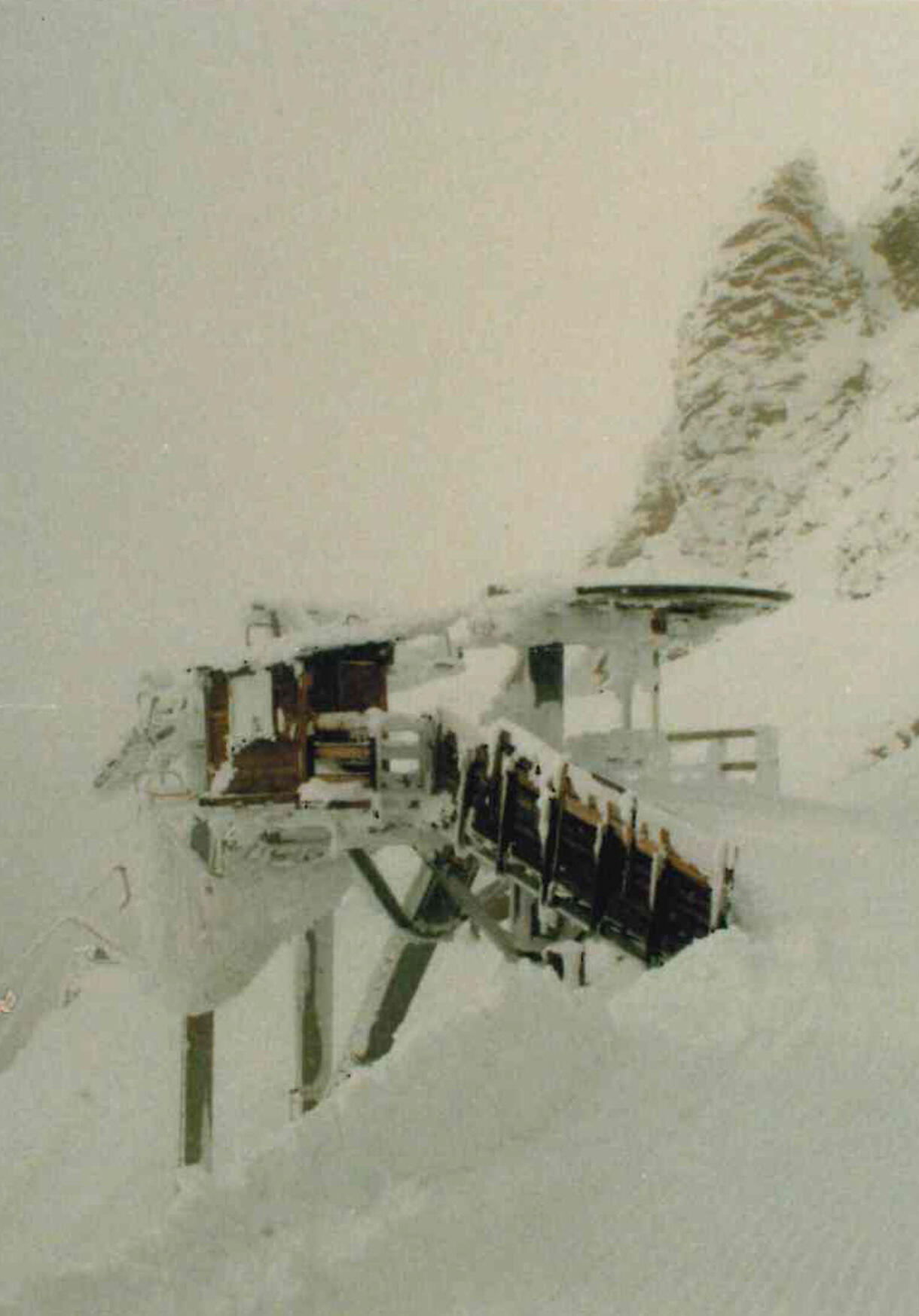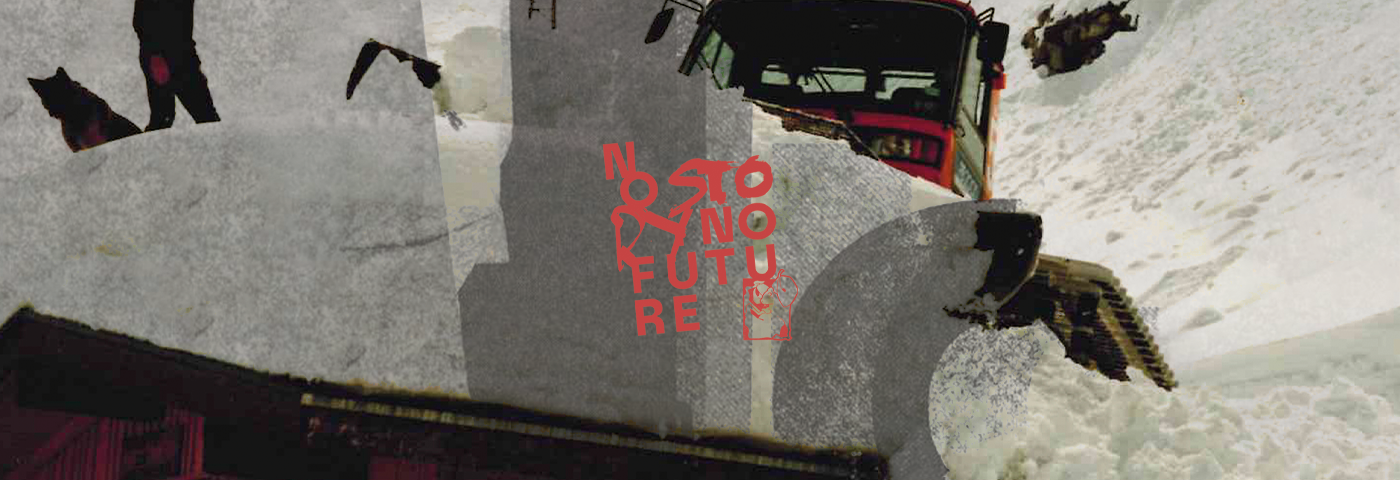There is no such thing as zero risk in the mountains.
But there are people whose job it is to reduce the risks so that we can enjoy our outings. Without them, there would be no resort, just the mountains and all their surprises. The ski patrol service has always put everything in place for you, from preparing the slopes to rescue services, their field of activity is vast. Today, you’re going to meet Henri Thovex, aka Riton, a former ski patroller in La Clusaz. Riton has seen many changes in his profession and has decided to tell us about his experiences, particularly those with avalanches.
Riton is my nickname. Ever since I was a kid, I’ve always been called that. I started as a ski patroller at L’Étale a very long time ago, in 1976/77 and then I was at Balme.
Why a ski patroller?
Let me explain, I did a bit of work at the ski school at Christmas 1976. At the time, I got my first qualifications, but I didn’t like teaching. So, I took my first ski patrol diploma in the meantime. Then I went to see Serge Pollet-Villard, who was the director of the patrol service, and he said: “Well listen, we’re going to take you on in the team”. And I spent my entire career there until 2018.

Every ski patroller has a special relationship with skiing, and you’re no exception. Can you tell us how this passion started?
I’m crazy about skiing. I love skiing, I was born for it! When I was young, I did ski jumping. There was a section at the Club des Sports, and at the Beauregard cable car and ice rink, there was a ski jump. I jumped it and broke the ski jump record at a very young age. In fact, when I was a teenager, in 1973 or 74, I was at mass with my dad and suddenly, the priest, who was in the middle of his sermon, spoke about the young man who had broken the ski jump record. And that was me! I went red in the face and my dad kept tapping me, saying “They’re talking about you!”. I did ski jumping for two winter seasons and then the section was closed down because there wasn’t enough interest. Alpine skiing gradually caught on at the start of the 1980s and ski ballet a bit later, with Grospiron in particular. In fact, we’ve held several World Cup ski ballet competitions here!
Anyway, I spent my career working for the ski patrol in winter and in summer, I worked in the construction industry, until I set up my own landscaping company in the early 90s which I ran until the end of 2018, when I retired and my son took over.

One aspect of the ski patroller’s job is to manage avalanches in the ski area. There have been many developments in this sector over the years. Nowadays, avalanches are triggered quickly. But back then, before Gazex pipes, it was a different story, wasn’t it?
Ah, avalanches… What we see now are mini-mini-mini avalanches. Apart from the one in April 2024. It even went through Crintiaux and Bergerie. Now, that really was some avalanche!
Avalanches used to start at the summit of Balme up there and they’d go all the way down to the Étrive plateau! The Balme sector was regularly closed due to the risk of avalanches because we didn’t have the resources that we have now. We didn’t have a helicopter; we climbed on foot, taking huge risks. It sometimes stayed closed for eight or ten days. We didn’t see anyone.
In time, helicopters arrived on the scene because the piste manager had connections in civil protection. We started to go up with them to the summits and, using gravity, we were able to trigger avalanches. We were taken up to Pointe, went down and fired shots.
This was the first step forward in avalanche control. Was La Clusaz one of the first French resorts to benefit from this advance?
The first with Chamonix, yes!
Another important point is that the very first Catex system (explosive transport cable), which must date from 1973 or 1974, was designed by two people from La Clusaz. It was the first in France! I operated it when I was starting out at L’Étale. When the weather wasn’t great and it was wet, it was tricky to start with the old motors.

We’ve heard about a kind of cannon that shoots arrows as well!
That’s the Avalancheur. It’s still there, but is no longer in use. It was designed by a company that made fireworks. It was a sphere filled with nitrogen and as the sphere was compressed, an arrow shot out. It was the second in France after La Plagne. In the very beginning, it was placed on the edge of a table!
With gravity, the arrow entered the snow cover and as soon as it stuck there, it triggered the pyrotechnic chain. There was liquid explosive in the arrows; we made up a mixture of liquids – it was a crazy thing to do! You had to be there very early in the morning to start shooting at 10 o’clock. There was no hurry back then! It was a very, very good revolution in terms of triggering, especially for us, because we climbed up on foot and often at night.
You mentioned Catexes (short for CAble Transporteur d’EXplosif in French). The one at L’Étale was the first in La Clusaz, but Balme also had its own.
The Catex in Balme was installed in 1983/84. We had a problem during installation. We unwound the cable under the helicopter, but by the time we reached the highest pylon, there was no cable on the reel! I called Serge to find out what was going on and, down at the bottom, they hadn’t fixed the cable properly, so it couldn’t be laid that day. We had to start again the next day, but there was a huge snowstorm.
The pilot insisted that we go, but the fog reached the summit at the same time as we did. There were five of us on board: the pilot, the mountain operations manager, Joël Collomb-Patton, Jean-Luc Laborde and Henri ‘Riton’ Thovex. There was panic in the cockpit. Joël opened the door and cleared the mist for the pilot, but when the pilot realised there was a high-voltage line in the area, he started to shake. Fortunately, we found a gap in the fog and were able to land a little further down on an old run in Balme. We breathed a huge sigh of relief and went for a very stiff drink! We forgot about the world for a while. All five of us were nearly killed.
After that, we managed to install the Catex and that really improved avalanche triggering in the Balme sector.

Today, much of the triggering depends on Gazexes designed in the 90s, but what are Gazexes exactly?
Yes, so, those are the big pipes you see sticking out of the mountain sides. There are some at L’Aiguille, L’Étale and 10 or 11 at Balme. They’re fired from the patrol service control room, by the manager or his deputy who can trigger them at any time, at the request of the grooming service and sector managers, and all this can be done in slippers! A huge revolution. In fact, they’re everywhere now and they’re also used a lot to make the departmental roads in the mountains safe.

It is often said that avalanches used to be much more spectacular. So, we wanted to check this with you! Can you tell us about the most impressive one you’ve seen?
That was when I was at La Grande Balme. Civil protection put us where the Gazex 5 is now and we set a charge. At the time, charges were a bit like you’d see in the movies, attached to an inner tube, so they had to be well attached. So, we triggered the snow slab which was above the mountain side and it went all the way to L’Étrivaz. It was absolutely crazy! Fortunately, the ski lift stayed standing. But in 1978, an avalanche picked up a ski lift on the way down. Nowadays, they’re smaller, but that doesn’t mean you should go off-piste, because a small avalanche is just as deadly as a big one.
In the patrol service, you don’t just deal with avalanches. You work in other areas such as rescue. This environment must have changed a lot too in recent years, has it?
When I joined the patrol service, there were 10 or 11 of us. I think that now, including the admin staff, there must be 40 or 45 of them. The entire ski area has changed and the ski lift infrastructure now has triple or even quadruple the capacity. The runs are bigger, so there are a lot more accidents. We used to pick up fracture cases in the old days, but that’s very rare now. When I started out, we used to fit splints which were made by local craftsmen. And now, it’s a lot of knees, ligaments, shoulder dislocations and wrists for snowboarders.
You’ve had to adapt the runs to accommodate the number of visitors.
We’ve come a long way since the 90s and pressure has mounted. Ski lifts have evolved very quickly. In the early 2000s, we got the Balme-Fernuy lift. Everything has been re-structured at L’Étale between the hybrid lift and the viewpoint. At Beauregard, the cable car has been replaced. When you take people up to the top of the lifts, the runs have to be adapted to the people who are going to use them, otherwise, the first 200 metres will be an accident-hotspot.

The mountains are a world where risk is always present, but is kept under control by dedicated professionals like Riton. This former ski patroller has seen the changes needed to ensure the safety of skiers. From managing avalanches with rudimentary methods to using modern technologies, such as Gazexes, every aspect of his job has changed over the years.
But if you were a ski patroller, when would you have preferred to work? Would you rather trek under ridges, shoot explosive arrows or wear slippers in the control room?









